WBR0575
Jump to navigation
Jump to search
| Author | [[PageAuthor::Rim Halaby, M.D. [1] (Reviewed by Yazan Daaboul, M.D.)]] |
|---|---|
| Exam Type | ExamType::USMLE Step 1 |
| Main Category | MainCategory::Pathophysiology |
| Sub Category | SubCategory::Neurology |
| Prompt | [[Prompt::A 36-year-old woman presents to the neurology clinic with a complaint of a 1 week history of bilateral upper extremity weakness. Upon further questioning, the patient reports that for the past 3 months, she has had multiple burns in both hands because she cannot seem to distinguish hot objects. She also reports she has numbness over the shoulders and the arms that follow a cape-like pattern. Physical examination is remarkable for burn marks in both hands, loss of pain and temperature sensation in the shoulders and arms, and diminished upper extremity reflexes bilaterally. Which of the following images depicts the most likely location of the patient's lesion (lesion in red)?]] |
| Answer A | [[AnswerA::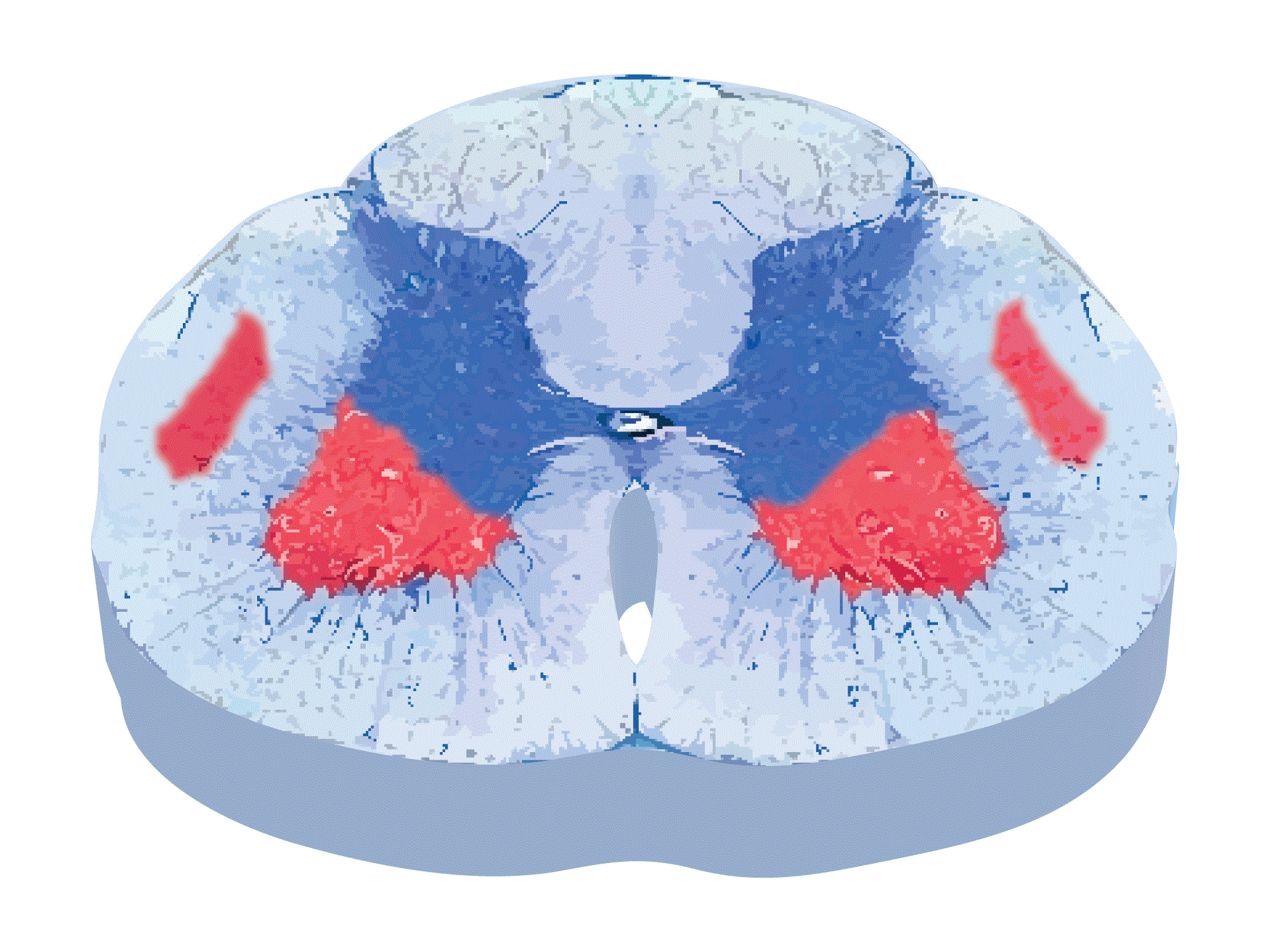 ]] ]]
|
| Answer A Explanation | [[AnswerAExp::This image typically depicts spinal cord lesions of ALS that involve upper and lower motor neuron systems.]] |
| Answer B | [[AnswerB::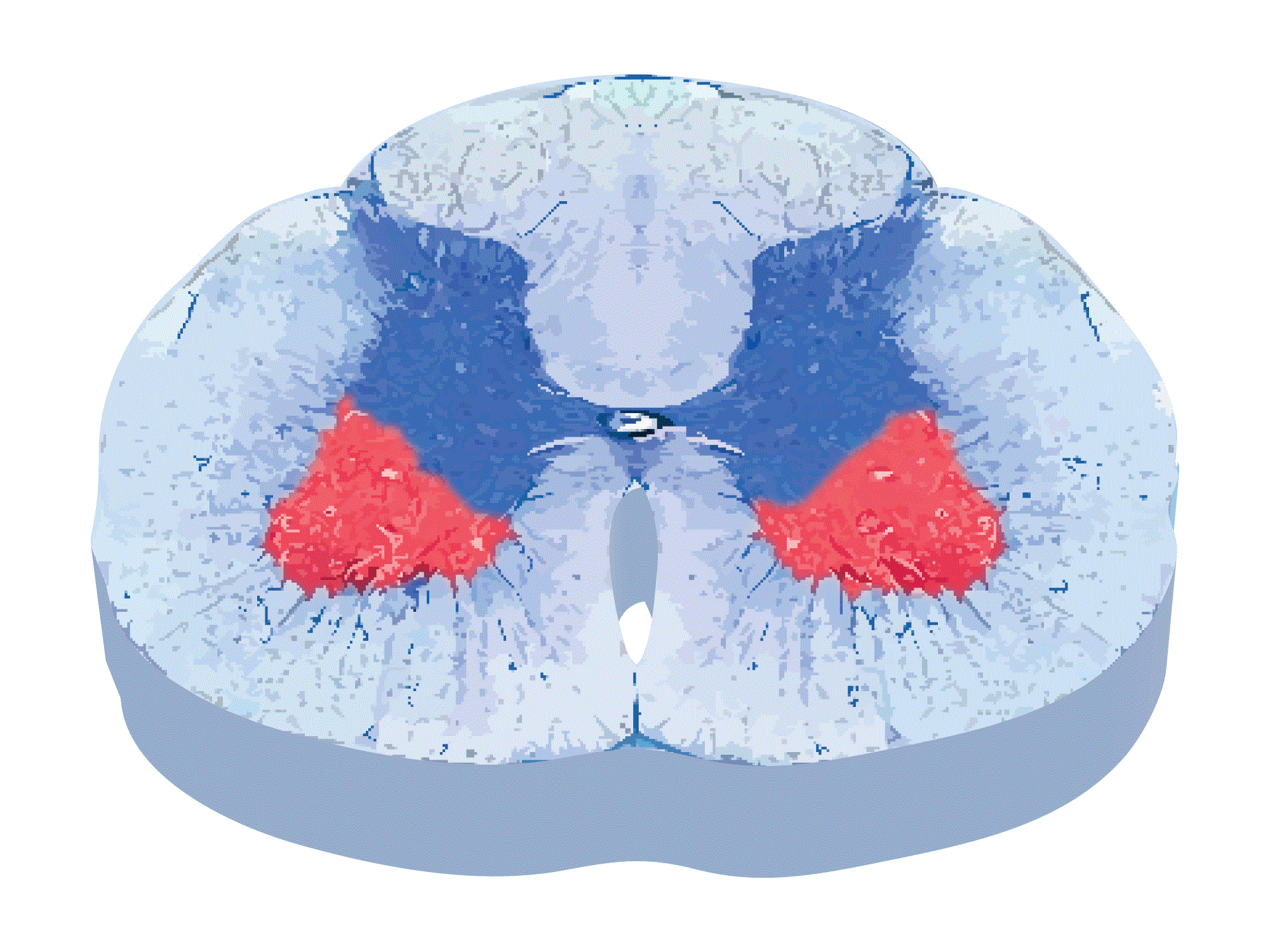 ]] ]]
|
| Answer B Explanation | [[AnswerBExp::This image depicts isolated anterior horn injury usually observed in patients with poliomyelitis or Werdnig-Hoffman Syndrome (floppy baby syndrome).]] |
| Answer C | [[AnswerC::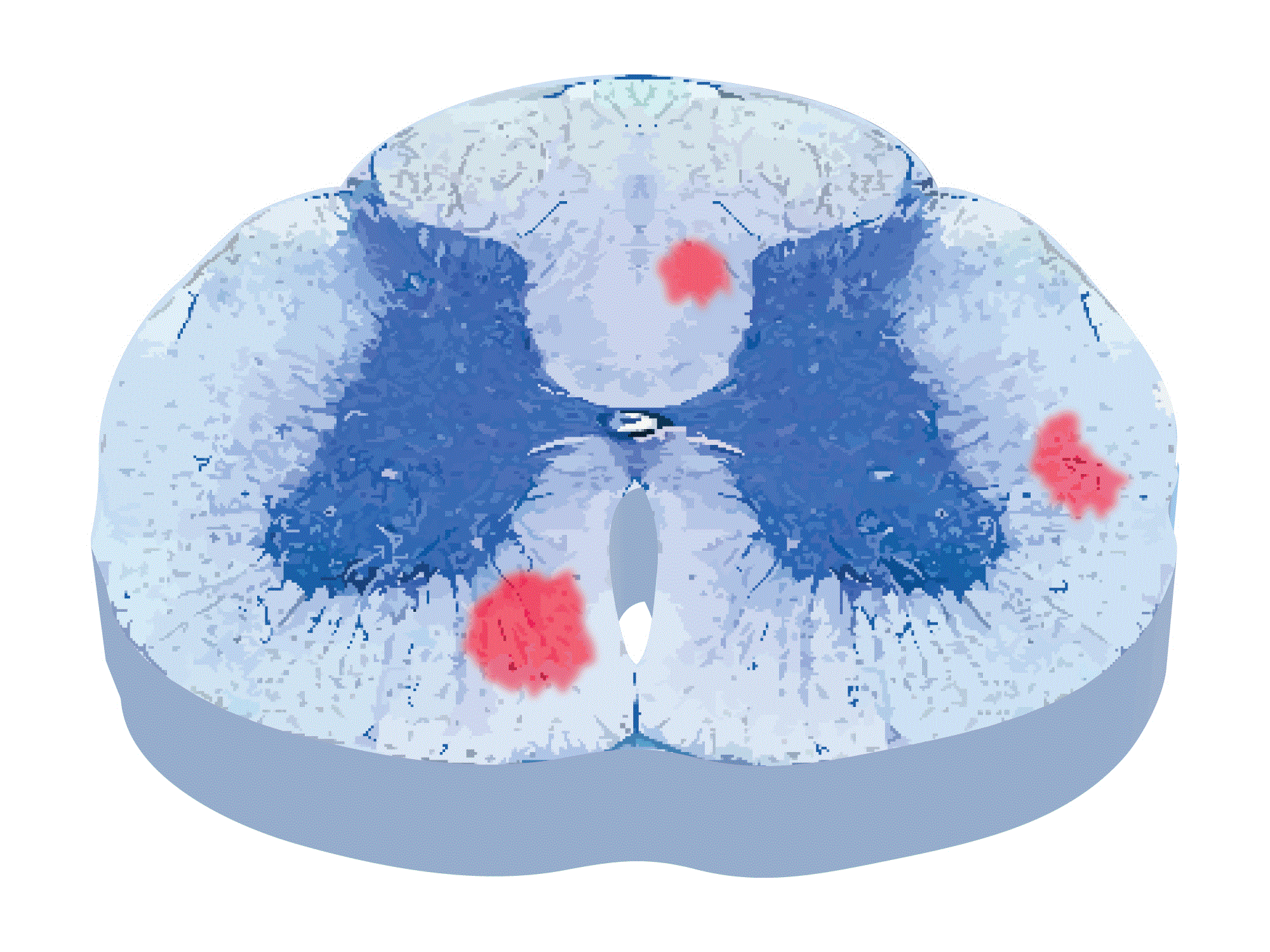 ]] ]]
|
| Answer C Explanation | AnswerCExp::This image depicts multiple, non-patterned white matter lesions usually observed in patients with multiple sclerosis. |
| Answer D | [[AnswerD::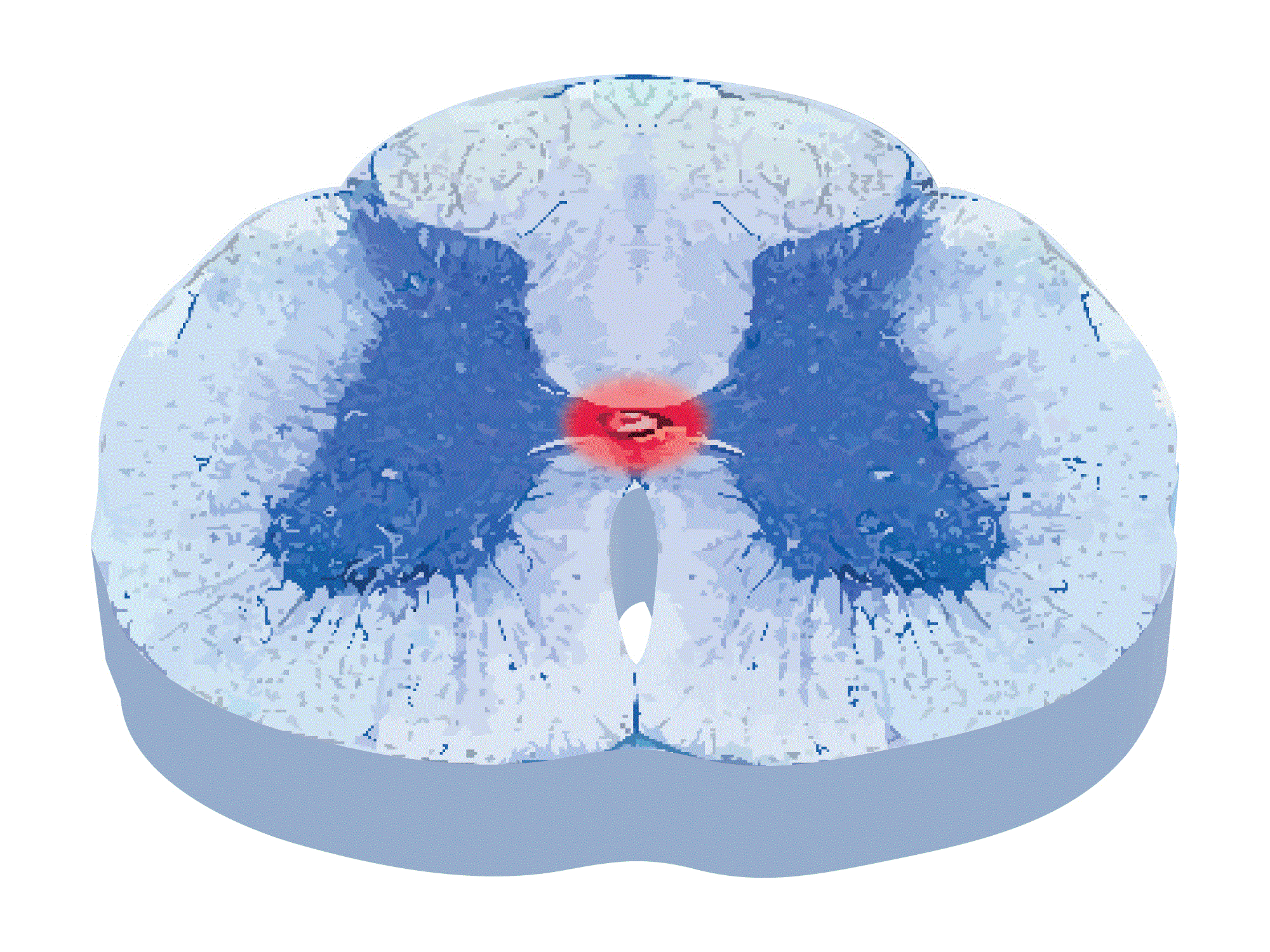 ]] ]]
|
| Answer D Explanation | [[AnswerDExp::This image depicts an expanding central canal that compresses adjacent tracts typically observed in syringomyelia. Spinothalamic tracts are often affected first in syringomyelia due to the anatomic proximity of the anterior white commissure that carries these tracts.]] |
| Answer E | [[AnswerE::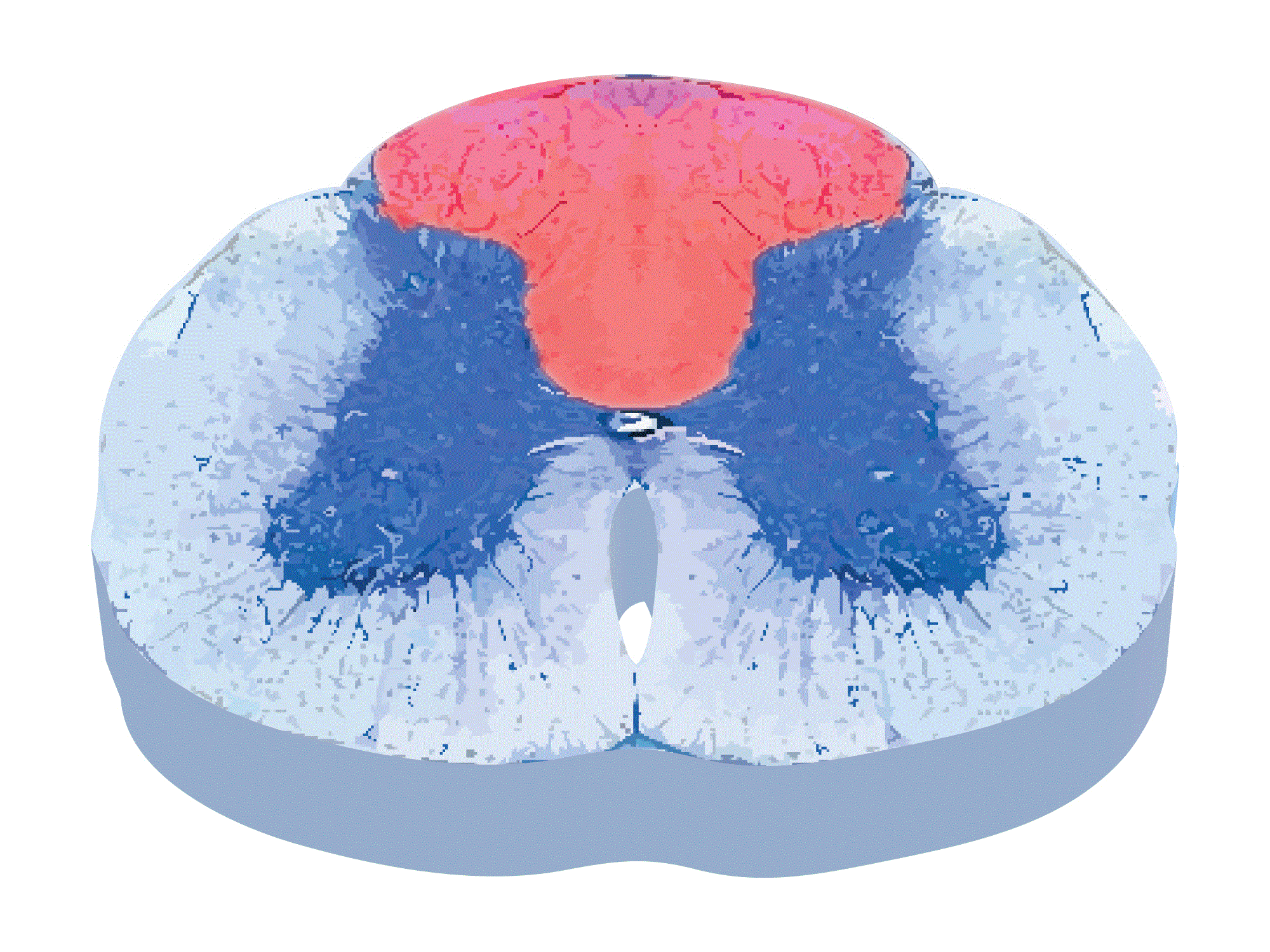 ]] ]]
|
| Answer E Explanation | AnswerEExp::Isolated dorsal column lesions are classical of tabes dorsalis caused by tertiary syphilis. |
| Right Answer | RightAnswer::D |
| Explanation | [[Explanation::Syringomyelia is a disease of the spinal cord caused by the the development of a fluid-filled cavity (syrinx) within the central canal. As the central cavity expands, nearby spinal tracts are affected. The syrinx first interrupts the spinothalamic tract fibers that decussate at the anterior white commissure in close proximity to the central canal. Stretching of the spinothalamic fibers that relay pain and temperature results in loss of pain and temperature. Most cases of syringomyelia affect the cervical spinal cord. As a result, patients often complain of a cape-like distribution of numbness over the shoulders and the arms. In contrast, light touch, position sense, and vibration senses are usually spared because they are carried by the relatively distant dorsal columns. As the syrinx expands further, it locally interrupts neurons of the anterior horn leading to lower motor neurons symptoms of the upper extremities, such as weakness, hyporeflexia, fasciculations, and muscle atrophy. It also locally interrupts descending motor fibers leading to upper motor neuron symptoms of the lower extremities, such as rigidity and hyperreflexia. Patients typically present with a history of loss of temperature and pain sensation in the hands with a history of multiple burns. As the syrinx becomes more significant, symptoms of weakness arise. Syringomyelia can be associated with Arnold–Chiari malformation. Educational Objective: Syringomyelia is caused by a fluid-filled cavity of the central canal that interrupts the spinothalamic tracts and results in bilateral loss of temperature and pain sensation in a cape-like distribution over the shoulders and the arms. Patients with syringomyelia often present with burns in their hands due to their inability to distinguish hot objects or the pain sensation normally associated with burns. |
| Approved | Approved::No |
| Keyword | WBRKeyword::Syringomyelia, WBRKeyword::Spinal cord, WBRKeyword::Spinothalamic tracts, WBRKeyword::Spinothalamic tract, WBRKeyword::Pain, WBRKeyword::Temperature, WBRKeyword::Pain and temperature, WBRKeyword::Anterior white commissure, WBRKeyword::Cape-like, WBRKeyword::Cape-like distribution, WBRKeyword::Cape like distribution, WBRKeyword::Burn, WBRKeyword::Numbness, WBRKeyword::Burns, WBRKeyword::Syrinx, WBRKeyword::Fluid-filled cavity, WBRKeyword::Fluid filled cavity |
| Linked Question | Linked:: |
| Order in Linked Questions | LinkedOrder:: |